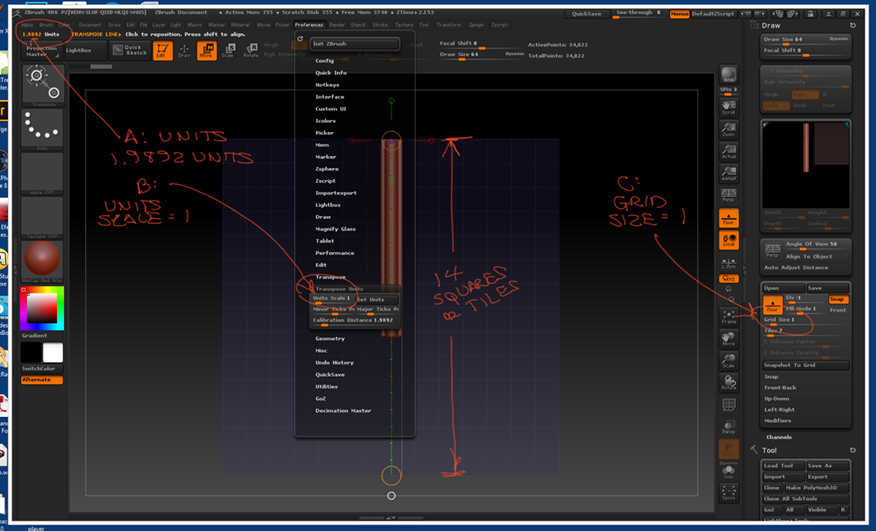I have asked about the grid before and I have been pointed to two different places in the online docs. But I am totally confused and am feeling pretty stupid…as though the harder I try to figure it out the more confused I get.
I have included a screen grab to show the different elements.
What I want to do is set a tile spacing (or whatever you call the lines that form the squares on the “floor” when it is activated) that is equal to 1 unit. So that when I use the ruler ( the transpose line ) it corresponds to the distance between the lines as 1 unit.
You will see that I have Unit Scale (B) to 1 and the Grid Size © to 1 also. Under the grid size it shows there are 7 tiles per unit. the transpose rule now shows almost 2 units (A) 1.9892.
The object I am making I needs to be 2.8 units
How to I set the floor so that I have tiles that are 1 unit tall and wide and that there are enough of them to make an object that can be arbitrarily at least 15 to 20 units tall or wide?
Are there any tutorials that go into more explanation for getting a handle on understanding this?
Thanks for any help with this.
Attachments


